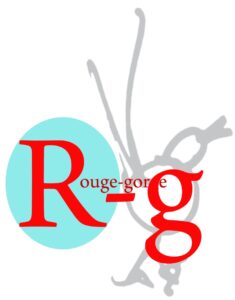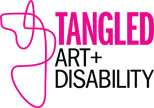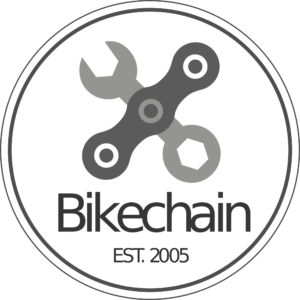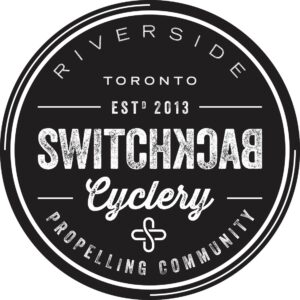2019 • KinesTHESES
Our “off-year” project for 2019 is KinesTHESES, curated by TPAC member Paul Couillard. KinesTHESES features a total of 10 artist residencies taking place between August and December, during which the featured artists will develop new, site-specific actions and events.
KinesTHESES focuses on works that take the notion of “moving” their audiences in the most literal sense, creating performative experiences that take place in the participating bodies of the audience. Witnesses and participants are more than just eyes and ears. These projects remind us that we are, above all, animate forms: tactile-kinesthetic creatures who first learn what we are and discover our world by moving through our environment as bodies experiencing dynamic flows and encountering surfaces and textures. These are the building blocks of what we come to recognize as time, space and matter.
German philosopher Edmund Husserl used the term “the kinestheses” to describe the perceptual experiences of bodily movement. He argued that these senses, above all, are the core of subjectivity. The fact that we can feel ourselves move, and that we have an innate sense of our position in space, is foundational to our ability to conceive of ourselves as “I”s.
Artists
Schedule
KinesTHESES Digital Toolkit
KinesTHESES began as a series of artist residencies featuring 10 artists that took place between August and November of 2019. The digital toolkit is a second, online phase that aims to support an ongoing presence for the projects. The toolkit combines curatorial reflection with recordings and other documents collected during the residencies, inviting online visitors to consider various possibilities for accessing the liveliness and liveness of these performative gestures.
1. KinesTHESES Project Background: Introducing the Digital Toolkit Idea
By Paul Couillard KinesTHESES was developed and organized by me (Paul Couillard) under the auspices of the Toronto Performance Art Collective (TPAC) as an “off-year” project.[1] KinesTHESES features 10 artists, who were invited to develop works that would engage an audience of participants and witnesses not simply as eyes and ears but as tactile-kinesthetic creatures: …
2. Assembling a Toolkit vs. the Logic of the Archive
If we consider performance as ‘of’ disappearance, if we think of the ephemeral as that which ‘vanishes,’ and if we think of performance as the antithesis of preservation, do we limit ourselves to an understanding of performance predetermined by a cultural habituation to the patrilineal, West-identified (arguably white-cultural) logic of the archive?(Schneider, 65) Much has …
3. Performing Access: A Video Conversation on (Artist) Archives with Paul Couillard and Margaret Dragu (August 30, 2019)
For me [performance has] always been about breathing the same air, and being in the same room, and feeling your pheromones and your cells and your energy vibrations and all of that very corporeal, very tactile-kinesthetic kind of stuff. Archives are […] remains that […] the actual bodies aren’t there any more. To me that’s …
4. You Are Here ("you had to be there: Experience and Representation
While the live situation may enable the phenomenological relations of flesh-to-flesh engagement, the documentary exchange (viewer/reader <—> document) is equally intersubjective.(Jones 1997: 12) Art historian and theorist Amelia Jones has written extensively about the uneasy relationship between live, body-based art practices and the documents such practices produce. Despite the heavy investment of both performance scholars …
5. Para-sites of Performance Art: Some Brief Thoughts on the Role of Artist-Curator
In terms of professions, I define myself first as a performance artist, but that label is closely followed by at least two others: performance curator and, more recently performance theorist. This confluence of roles is no accident; it reflects how I discovered that there was such a thing as performance art in the first place. …
6. KinesTHESES: About the Title
The name of this curatorial project is a play on the term “kinestheses,” which comes from the phenomenologist philosopher Edmund Husserl. Husserl was deeply attuned to the close connection between life and movement. He described living beings first and foremost as animate organisms, and accorded a foundational importance for human consciousness in what he called …
7. On conserving performance art: A response to "Performance: The Ethics and the Politics of Care — # 1. Mapping the Field" (May 29 - 30, 2021 online colloquium)
I recently attended a free conference (hosted on Zoom and livestreamed on YouTube) examining the conservation of performance works. “Performance: The Ethics and the Politics of Care — # 1. Mapping the Field” was addressed primarily toward the art conservation community, and expressly aimed at locating the discourse of conservation within a broader field of the …
8. Sakiko Yamaoka's Body Maintenance : Description, digital photos and video recordings
Sakiko Yamaoka prefaced her KinesTHESES project, Body Maintenance, with these words: “I, personally, don’t like to do or watch any sports, but we can use the tools of sport for other intentions. For example, art performances.” Consequently, her project for KinesTHESES took place at a downtown Toronto basketball gymnasium on a sunny summer Sunday afternoon. …
9. Body Maintenance within KinesTHESES
As the KinesTHESES curator, I am interested in the tactile-kinesthetic propositions Body Maintenance offers for an audience of thinking bodies, and how these propositions activate and influence participants’ self-conception. This entry of the Toolkit offers some background information on why I invited Sakiko to be a part of KinesTHESES, and how, having experienced Body Maintenance, …
10. Body Maintenance—Notes from Sakiko
—Sent via email to the curator, November 2, 2021. For me, the most important aspect of Body Maintenance is the rhythm. That is why I dribbled the ball in the room.The calm and well-paced sounds from the ball always made me relax and feel “sane. Also having relations and conversation with people is the second …
11. Interview with Sakiko Yamaoka: An ambulatory, gestural conversation, or, "I know her, but I don't know her."
One of my favourite ways to talk with someone is while walking together. The shared forward momentum almost automatically generates an intimate connection between the walkers, attuning their moving bodies in a rhythm of complicity. That same momentum can also propel the conversation, contributing a sense of flow. Walking together is often an important part …
12. A negotiated interaction: Step 2 by Stephanie Marshall and Sakiko Yamaoka (Description, digital photos and video recordings)
It is common for art exhibitions to include animating events such as artist talks, where audiences can discover more about the artist and their working methods, the thinking and doing behind the project, the various challenges and discoveries involved in developing the work, and so forth. Often these artist talks take the form of a …
13. A negotiated interaction: Body Atlas by Margaret Dragu and Fiona Griffiths (Description, video recording, “dead” livestream)
As noted in the previous post, the KinesTHESES project included a series of negotiated interactions that paired local and non-local artists. Distinct from the artists’ individual projects, these events were an opportunity for the invited artists to contextualize—on their own terms and in dialogue with each other rather than with me as the curator—their artistic …
14. Fiona Griffiths' body wilderness : Description and video recording
Fiona Griffiths’ body wilderness project took place over the course of a week, offering a total of five guided walks in Toronto’s Cedarvale Park for groups of up to 10 participants. Participants were asked to register in advance for a daytime experience lasting approximately 90 minutes. Cedarvale Park is one of Toronto’s larger green spaces, …
15. body wilderness within KinesTHESES
Inviting Fiona I have known and worked closely with Fiona Griffiths over many years, benefitting from her contributions as an artist, a teacher, and a health and fitness trainer-practitioner. We are good friends as well as colleagues, and she was instrumental in assisting my recovery from a series of catastrophic illnesses, in particular providing craniosacral …













